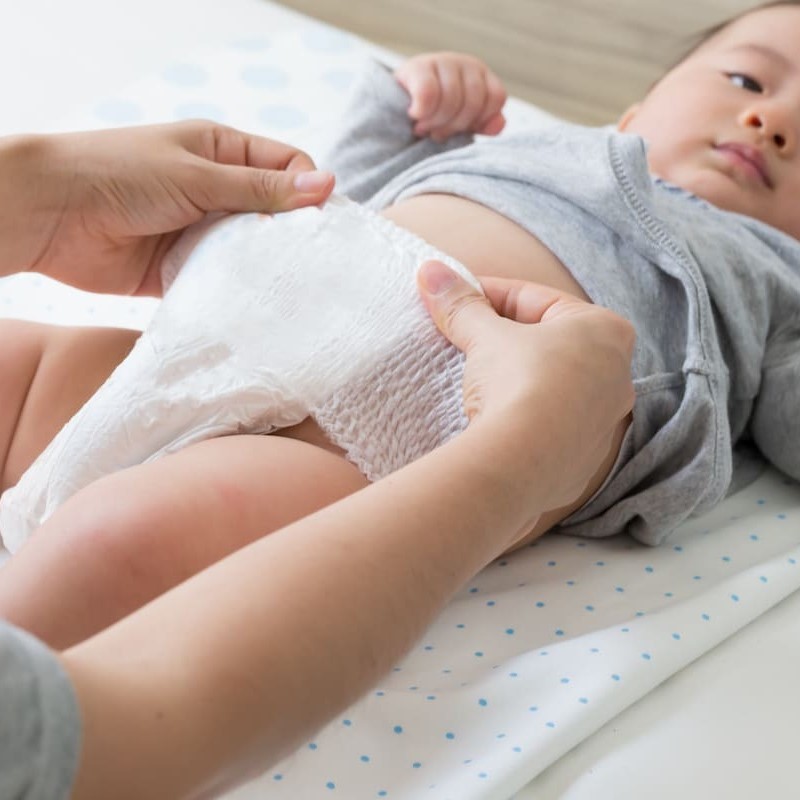Disposable diapers are a staple in modern parenting, providing convenience and comfort for both babies and parents alike. However, many parents may wonder, where do disposable diapers come from? Understanding the origins of disposable diapers involves exploring their materials, manufacturing processes, and the journey from conception to your baby’s nursery. This article will delve into the history, production methods, and environmental implications of disposable diapers.
Historical Development of Disposable Diapers
The history of disposable diapers is both fascinating and practical. Starting in the 1940s, early versions have evolved from simple designs to the advanced products we see today. Each phase of development has contributed to the convenience and effectiveness of modern diapers.
Early Innovations and Attempts
Disposable diapers have come a long way since the first attempts. In the 1930s, ‘Destroyable Babies Napkins’ made an appearance but were not quite effective. The real game-changer came when Marion Donovan used shower curtain material to create a waterproof cover for cloth diapers, adding in a paper liner for added absorbency. These innovations set the foundation for disposable diapers and revolutionized the way parents dealt with baby care.
From Muslin and Terry Cloth to Early Disposables
Before disposables, parents used cloth materials like muslin and terry cloth. To manage leaks, they even added rubber pants on top. But these were not very absorbent and often led to diaper rash. Early disposable diapers, made from materials like cellulose wadding inside plastic garments, aimed to solve these problems. Despite some trial and error, these disposables set the stage for the convenience-driven diapers we use today.
Key Components of Modern Disposable Diapers
Today’s disposable diapers are a marvel of engineering, crafted with materials designed for optimal performance. Let’s explore the crucial components that make up these modern essentials.
Super Absorbent Polymer (SAP) Technology
Super Absorbent Polymer (SAP) is the core of a diaper’s absorbency capabilities. These tiny polymer particles can absorb and retain a large volume of liquid, making them essential for good diaper performance. Common SAP materials include sodium polyacrylate, known for its excellent water absorbing properties. This technology allows diapers to stay thin and light, yet highly effective in liquid retention, providing comfort without bulkiness.
Non-Woven Fabric Evolution
Non-woven fabrics form the external layers of disposable diapers. These materials are not woven or knitted, but are instead formed through processes like the melt-blown method. Fabrics like polypropylene and polyethylene give diapers their soft texture and shape. This evolution in fabric technology aids in the production of breathable yet leak-proof diapers, useful for keeping a baby’s skin dry and healthy.
Wood Pulp and Its Role
Wood pulp is also integral to the design of disposable diapers. Derived primarily from pine trees, this material works hand-in-hand with SAP to enhance the diaper’s absorbency. The wood pulp fibers create a matrix that holds moisture, helping to distribute it evenly across the diaper. This ensures that wetness is quickly pulled away from a baby’s skin, preventing irritation and diaper rash.
Manufacturing Process of Disposable Diapers

Creating disposable diapers involves several complex steps. These steps ensure high-quality, comfortable, and absorbent diapers for consumers.
Assembly Line Automation
Disposable diapers are made using highly automated assembly lines. Machines perform tasks with precision and speed. This automation increases production rates and consistency in quality. Each diaper component is assembled systematically to form the final product.
Integration of Non-Woven Fabrics and SAPs
Super Absorbent Polymers (SAPs) and non-woven fabrics are vital in disposable diapers. SAPs trap and hold liquids effectively. They are mixed with fluffed wood pulp and layered with non-woven fabric. These fabrics give the diaper its shape and softness. Together, they create a leak-proof barrier while also allowing the skin to breathe.
Quality Control Measures
Quality control is crucial in the manufacturing of disposable diapers. Each batch undergoes strict testing. Tests include absorbency under pressure and resistance to leakage. This ensures every diaper meets the required safety and performance standards. Manufacturers also check for any defects in material distribution or assembly integrity.
These steps demonstrate the care and precision that go into producing reliable disposable diapers.
Innovations in Design and Material

Innovation is key to the evolution of disposable diapers. Manufacturers focus on improving absorbency, fit, and environmental impact.
SAP Enhancements for Higher Absorbency
To achieve high absorbency, manufacturers have improved SAP. They use advanced polymers, like sodium polyacrylate. These absorb more liquid, keeping diapers thin and less bulky. Changes in the production of SAPs also aim to reduce costs. This makes high-absorbency diapers more accessible to consumers.
Evolution of Diaper Fit and Comfort
Diaper fit has seen major improvements. Elastic bands are added for snugness and to prevent leaks. The diaper’s shape has changed too. Now, an hourglass design reduces bulk and boosts mobility. Soft, breathable fabrics are used. These keep a baby’s skin dry and comfortable. Diaper fasteners have evolved. Better tapes and Velcro make them easier to adjust and more secure.
Environmental Considerations in Materials
Awareness of environmental impact has grown. Brands now offer eco-friendly options. These include diapers made with biodegradable materials like bamboo. Manufacturing processes aim to reduce waste and use less harmful substances. This shift is driven by consumer demand for products that are safe for both babies and the planet.
Market Evolution and Consumer Impact
The landscape of disposable diapers has seen significant shifts over time. As disposable diapers have become an essential part of family life, the market and its consumers have experienced profound impacts.
Role of Big Brands in Market Development
Big brands such as Pampers and Huggies have played pivotal roles in shaping the disposable diaper market. Their innovations in design and marketing have driven widespread acceptance of disposable diapers. They have invested heavily in research to enhance features like absorbency and comfort. These efforts have made it easier for consumers to choose disposable diapers over cloth options. Their competitive strategies have also led to a range of price points, making disposable diapers more accessible to a broad audience.
Shifts Toward Eco-Friendly Products
Consumers today are more environmentally conscious. They seek products that are gentle on their baby’s skin and the earth. In response, brands are shifting to eco-friendly products. These green alternatives include diapers made from sustainable materials like bamboo. They are also adopting better practices like reducing harmful chemicals and improving packaging. This move towards sustainability reflects a growing trend. Parents are willing to pay a premium for products that promise a lesser environmental footprint. As the demand rises, more companies are entering the market. They offer eco-conscious options that cater to these consumer preferences.
Future Direction and Sustainability

Looking ahead, disposable diapers are poised for transformative change in both design and environmental impact.
Ongoing Innovations for Efficiency
In the pursuit of efficiency, manufacturers are exploring new ways to enhance disposable diapers. Innovations focus on reducing material usage without compromising performance. For instance, thinner SAP layers that absorb more liquid, and improved designs that offer better fit with less waste. Automation in the manufacturing process continues to advance, aiming to produce more diapers at a faster rate while using less energy.
Consumer Trends Toward Sustainable Products
Consumers now demand products that are both effective and eco-conscious. They are choosing diapers made from organic and sustainable resources, like bamboo and cotton. There is a growing preference for products that are free from harsh chemicals and dyes. This reflects a broader trend where people prioritize health and the environment. Diaper brands are responding by creating biodegradable options and improving the life cycle of their products from production to disposal. As awareness grows, more consumers are likely to opt for brands that align with their values of sustainability and responsibility.




